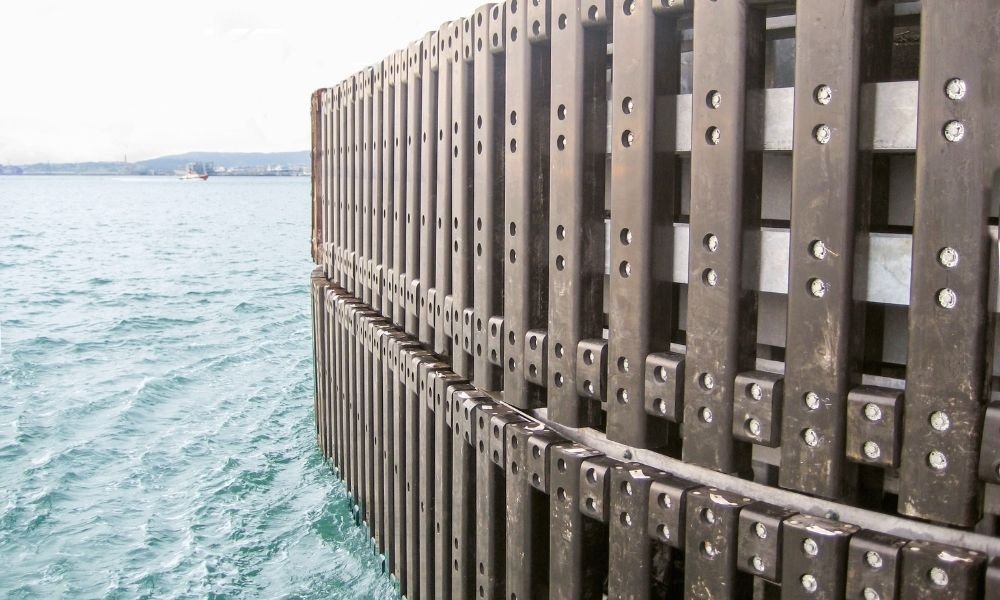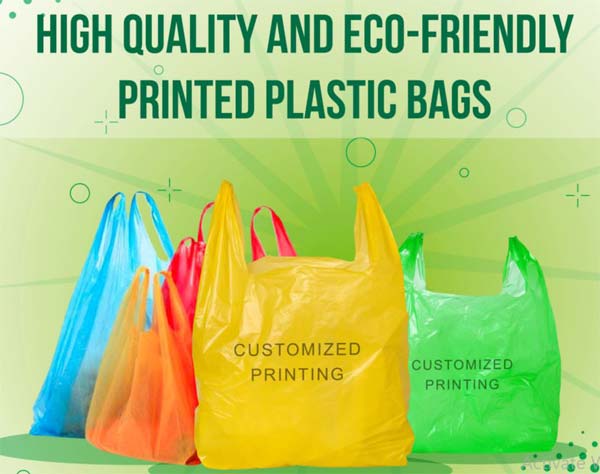Is Hdpe Good For The Environment? Exploring The Eco-Friendliness
Is HDPE good for the environment? It’s a question that has been on the minds of many environmentally conscious individuals. And the answer may surprise you. HDPE, or high-density polyethylene, is a versatile and widely used plastic that has garnered quite a bit of attention lately.
With its durability, lightweight nature, and resistance to chemicals, HDPE has found its way into various applications, from packaging to construction. But what about its environmental impact? Is HDPE a friend or foe to our planet? In this article, we will delve into the world of HDPE and explore its effects on the environment. So, let’s dive right in and find out if HDPE truly lives up to its eco-friendly reputation.
Is HDPE Good for the Environment?
Plastic pollution has become a major global concern in recent years. As awareness grows about the devastating impact of plastic waste on our planet, there is a growing focus on finding more sustainable alternatives. High-density polyethylene (HDPE) is one such material that has gained attention for its potential environmental benefits. In this article, we will explore whether HDPE is good for the environment and examine its various aspects.
The Basics of HDPE
HDPE is a type of plastic that is commonly used in a wide range of applications, from packaging materials to construction products. It is made from petroleum, a non-renewable resource. However, HDPE is considered a more environmentally friendly plastic compared to other types, such as PVC or polystyrene, due to its lower environmental impact throughout its life cycle.
Durability and Longevity
One of the key reasons HDPE is considered better for the environment is its durability. HDPE is known for its strength and resistance to wear and tear. Unlike some other plastics, HDPE products have a longer lifespan, reducing the need for frequent replacements. This characteristic can help minimize waste generation and the overall environmental footprint associated with plastic manufacturing.
Recyclability
Recycling plays a crucial role in reducing plastic waste and conserving resources. HDPE is a highly recyclable material, and this contributes to its environmental benefits. The recycling process for HDPE involves melting down the plastic and reshaping it into new products. This closed-loop recycling system helps conserve energy and raw materials.
Energy Efficiency
The production of HDPE requires less energy compared to other plastics. It has a lower melting point, which means less energy is needed during the manufacturing process. This energy efficiency can help reduce greenhouse gas emissions and minimize the carbon footprint associated with plastic production.
Environmental Impact of HDPE
While HDPE has several positive environmental attributes, it is essential to acknowledge its potential drawbacks and consider the overall impact on the environment.
Non-Biodegradable Nature
HDPE is classified as a non-biodegradable material. When HDPE products are discarded and end up in landfills or the natural environment, they can persist for hundreds of years. This poses a significant challenge, as accumulated plastic waste can have detrimental effects on ecosystems and wildlife.
Carbon Emissions
Although HDPE production is relatively energy-efficient, it still contributes to carbon emissions. The extraction and refining of petroleum, the primary raw material for HDPE, release greenhouse gases into the atmosphere. Additionally, the transportation and processing of HDPE also contribute to the carbon footprint associated with this plastic.
Impact on Natural Resources
As HDPE is derived from petroleum, its production relies on the extraction of finite fossil fuel resources. The extraction process can have various environmental consequences, including habitat destruction, water pollution, and the release of harmful chemicals.
HDPE in Comparison to Other Plastics
To truly assess the environmental impact of HDPE, it is crucial to compare it with other commonly used plastics.
PVC (Polyvinyl Chloride)
PVC is widely used in construction and plumbing applications. It has a higher environmental impact compared to HDPE. PVC production involves the release of toxic chemicals and the generation of hazardous by-products. Furthermore, PVC recycling is more challenging than recycling HDPE.
Polystyrene
Polystyrene, commonly known as Styrofoam, is widely used in packaging materials. It is notorious for its environmental impact due to its slow degradation and its contribution to marine pollution. HDPE is considered a better alternative to polystyrene due to its recyclability and lower overall environmental impact.
Enhancing the Environmental Performance of HDPE
To further improve the environmental credentials of HDPE, various strategies are being implemented.
Reducing Consumption
One of the most effective ways to address plastic pollution is by reducing overall consumption. By embracing a more sustainable lifestyle and opting for reusable or alternative materials where possible, the demand for HDPE and other plastics can be minimized.
Design for Recycling
Product design plays a crucial role in the recyclability of HDPE. By considering the end-of-life scenarios during the design phase, manufacturers can create products that are easier to recycle, thereby maximizing the environmental benefits of HDPE.
Innovation in Recycling Technology
Advancements in recycling technology can significantly enhance the environmental performance of HDPE. Researchers and engineers are continuously developing new methods to increase the efficiency and effectiveness of HDPE recycling. These innovations include improved sorting techniques, chemical recycling, and the development of new markets for recycled HDPE.
Promotion of Circular Economy
Transitioning to a circular economy model can provide substantial environmental benefits. The circular economy aims to minimize waste generation and maximize resource efficiency by promoting the recycling and reuse of materials like HDPE. By closing the loop and ensuring that HDPE products are recycled and reintegrated into the production cycle, the environmental impact can be significantly reduced.
HDPE, with its durability, recyclability, and lower energy requirements, offers several environmental advantages compared to other plastics. However, it is crucial to address its non-biodegradable nature, carbon emissions, and impact on natural resources. By adopting sustainable practices, reducing consumption, and embracing a circular economy, the environmental performance of HDPE can be further enhanced. It is important for individuals, industries, and governments to work together to ensure responsible use and disposal of HDPE, ultimately minimizing the environmental impact of this widely used plastic.
What Is HDPE Plastic? | High-Density Polyethylene
Frequently Asked Questions
Is HDPE good for the environment?
High-density polyethylene (HDPE) is considered to be a good choice for the environment due to several reasons:
What are the environmental benefits of HDPE?
HDPE is highly recyclable, which means it can be transformed back into its original form or repurposed into other products. This helps to reduce waste and conserves resources. Additionally, HDPE production requires less energy compared to other plastics, resulting in lower greenhouse gas emissions. Furthermore, HDPE is resistant to chemicals, UV radiation, and moisture, increasing its durability and lifespan, thus reducing the need for frequent replacements and reducing overall waste generation.
Does HDPE contribute to pollution?
HDPE itself is not considered a major contributor to pollution. However, inadequate disposal or irresponsible handling of HDPE products, such as littering or improper recycling, can contribute to environmental pollution. It is important to properly dispose of HDPE items and ensure they are recycled to prevent them from ending up in landfills or oceans.
Is HDPE biodegradable?
No, HDPE is not biodegradable. It is a type of plastic that takes a significant amount of time to break down in the environment. However, its durability and resistance to degradation make it suitable for long-term use in various applications, helping to reduce waste and promote sustainability.
What are the alternatives to HDPE for environmental sustainability?
Several alternatives to HDPE exist for those seeking more environmentally sustainable options. Some examples include bioplastics made from renewable resources like corn or sugarcane, as well as other recyclable plastics such as polyethylene terephthalate (PET) or polypropylene (PP). Additionally, considering reusable options like glass or stainless steel can also help reduce plastic waste.
Is HDPE harmful to wildlife?
When disposed of improperly, HDPE products can pose a hazard to wildlife. Animals may mistake HDPE waste for food, leading to ingestion and potential entanglement. This can have detrimental effects on their health and ecosystems. Responsible disposal and recycling of HDPE products are vital to prevent harm to wildlife and preserve the environment.
Final Thoughts
HDPE, or High-Density Polyethylene, is undeniably beneficial for the environment. Its versatility, durability, and recyclability make it a sustainable choice for various applications. HDPE’s lightweight nature reduces transportation emissions, while its resistance to chemicals and degradation ensures long-term usage. Additionally, its recycling process requires less energy compared to other plastics, further minimizing its environmental impact. However, proper waste management and recycling infrastructure are crucial in maximizing the benefits of HDPE. It is imperative that individuals, industries, and governments continue to promote and invest in recycling initiatives. By doing so, we can harness the full potential of HDPE and move towards a more sustainable future.




